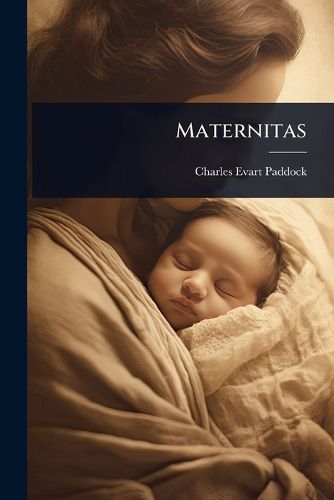Readings Newsletter
Become a Readings Member to make your shopping experience even easier.
Sign in or sign up for free!
You’re not far away from qualifying for FREE standard shipping within Australia
You’ve qualified for FREE standard shipping within Australia
The cart is loading…






"Maternitas: A Book Concerning the Care of the Prospective Mother and Her Child" by Charles Evart Paddock, originally published in 1905, offers a fascinating glimpse into early 20th-century attitudes and practices surrounding pregnancy and childbirth. This book provides guidance for expectant mothers on topics ranging from prenatal care and diet to the delivery process and the early care of infants.
While medical understanding has significantly advanced since its original publication, "Maternitas" remains a valuable historical document. It provides insights into the social and cultural context of motherhood during that era, reflecting the prevalent beliefs and concerns surrounding maternal and infant health. Readers interested in the history of medicine, women's studies, and the evolution of childbirth practices will find this book a compelling and informative resource.
This work has been selected by scholars as being culturally important, and is part of the knowledge base of civilization as we know it. This work was reproduced from the original artifact, and remains as true to the original work as possible. Therefore, you will see the original copyright references, library stamps (as most of these works have been housed in our most important libraries around the world), and other notations in the work.
This work is in the public domain in the United States of America, and possibly other nations. Within the United States, you may freely copy and distribute this work, as no entity (individual or corporate) has a copyright on the body of the work.
As a reproduction of a historical artifact, this work may contain missing or blurred pages, poor pictures, errant marks, etc. Scholars believe, and we concur, that this work is important enough to be preserved, reproduced, and made generally available to the public. We appreciate your support of the preservation process, and thank you for being an important part of keeping this knowledge alive and relevant.
$9.00 standard shipping within Australia
FREE standard shipping within Australia for orders over $100.00
Express & International shipping calculated at checkout
"Maternitas: A Book Concerning the Care of the Prospective Mother and Her Child" by Charles Evart Paddock, originally published in 1905, offers a fascinating glimpse into early 20th-century attitudes and practices surrounding pregnancy and childbirth. This book provides guidance for expectant mothers on topics ranging from prenatal care and diet to the delivery process and the early care of infants.
While medical understanding has significantly advanced since its original publication, "Maternitas" remains a valuable historical document. It provides insights into the social and cultural context of motherhood during that era, reflecting the prevalent beliefs and concerns surrounding maternal and infant health. Readers interested in the history of medicine, women's studies, and the evolution of childbirth practices will find this book a compelling and informative resource.
This work has been selected by scholars as being culturally important, and is part of the knowledge base of civilization as we know it. This work was reproduced from the original artifact, and remains as true to the original work as possible. Therefore, you will see the original copyright references, library stamps (as most of these works have been housed in our most important libraries around the world), and other notations in the work.
This work is in the public domain in the United States of America, and possibly other nations. Within the United States, you may freely copy and distribute this work, as no entity (individual or corporate) has a copyright on the body of the work.
As a reproduction of a historical artifact, this work may contain missing or blurred pages, poor pictures, errant marks, etc. Scholars believe, and we concur, that this work is important enough to be preserved, reproduced, and made generally available to the public. We appreciate your support of the preservation process, and thank you for being an important part of keeping this knowledge alive and relevant.